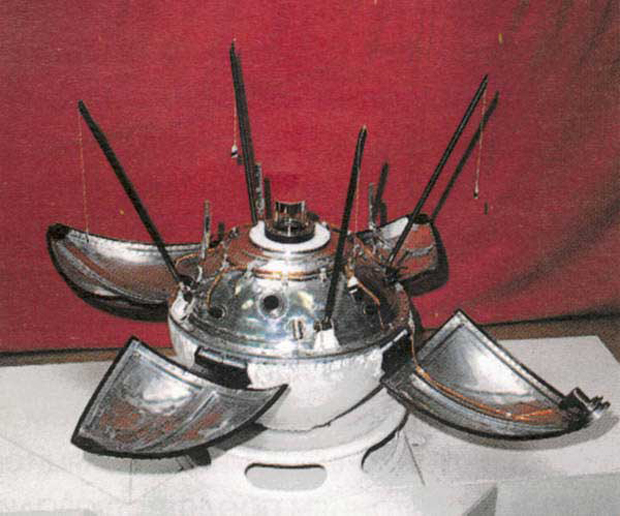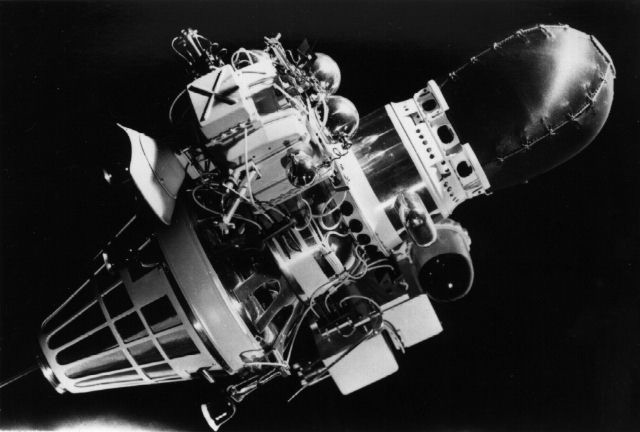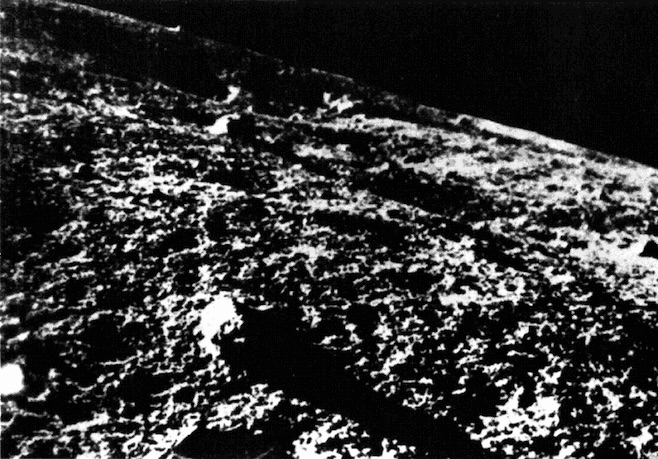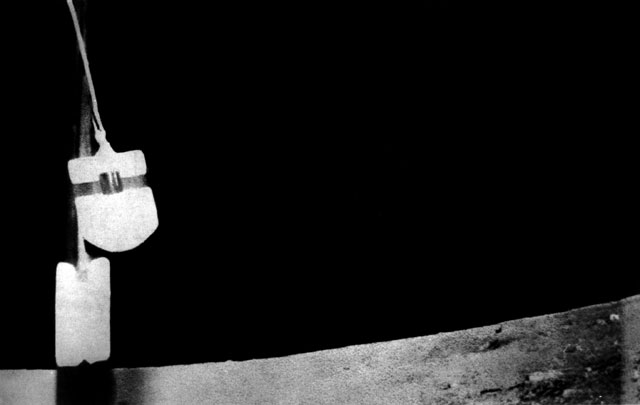
Long-Lost Lander: Researchers Hunting for Soviet Moon Probe Luna 9

The search is on for the former Soviet Union's Luna 9 moon probe, which made history's first-ever successful soft landing on a body beyond Earth.
Luna 9 made it to the moon on Feb. 3, 1966, and shortly thereafter beamed home the first images taken from the lunar surface. When pieced together, those pictures offered a panoramic view of the moon's bleak terrain and the horizon less than a mile away.
Now, nearly a half-century later, researchers are using NASA's sharp-eyed Lunar Reconnaissance Orbiter (LRO) in an attempt to locate the final resting place of Luna 9, which is less than 2 feet (0.6 meters) wide and weighed about 220 lbs. (100 kilograms) back on Earth. (The spherical probe weighs about 37 lbs. [17 kg] in the moon's low-gravity environment, though the craft's mass remains constant everywhere.) [The Moon: Space Programs' Dumping Ground (Infographic)]
Ingenious landing system
Getting Luna 9 safely onto the moon's surface required a great deal of engineering creativity.

"The method was ingenious," said Philip Stooke, an associate professor at the Department of Geography and the Centre for Planetary Science and Exploration at the University of Western Ontario in Canada.
Stooke said that the spacecraft descended under rocket power, slowing down just above the moon's surface. A long rod, projecting from under the spacecraft, eventually touched the lunar terrain. That contact triggered the landing probe's thrusters to turn off, which the Luna 9 landing capsule then ejected from the descent stage. The descent stage then fell to the ground.
The Luna 9 landing capsule was surrounded by an air-bag-like cover that softened the impact on the moon and was then discarded. The egg-shaped capsule rolled to a stop nearby, unfolded its petal-like covers and began operating, Stooke said.
Get the Space.com Newsletter
Breaking space news, the latest updates on rocket launches, skywatching events and more!
Coordinating the coordinates
Will people ever find Luna 9 in LRO images?
"Maybe," Stooke said. "The Luna 9 lander would be small, barely two pixels across in the best images."
But, Stooke added, the lander's rocket stage would be bigger than that, and a bright patch created by the rocket's blast might be visible; such patches are visible at most other lunar landing sites. The best evidence would come from a comparison of the craters near a possible site for the lander, he said, contrasted against those seen in the historical Luna 9 surface images. This would be a better method because these craters are bigger than the lander, and thus easier to spot.
"The Soviets published maps, which we could compare with LRO images," Stooke said. "The Luna 9 landing site was always said to be at about 7.13 degrees north, 64.37 degrees west, based on tracking, but this doesn't fit with the surface photos."
Luna 9 captured a 360-degree panorama that shows more than 200 degrees of the horizon. That horizon is flat, as would be expected of the moon's dark volcanic plains regions, which are known as mare (plural maria).

"But the coordinates put it [the lander] pretty much on the edge of a range of hills, the remnants of an old crater rim. Those hills should be in the images, but they are not," Stooke said. "I have suggested that the landing must be further north or east, far enough away that the hills are over the horizon … but there just is not enough in the Luna 9 images to help very much." [21 Most Marvelous Moon Missions]
Where's Waldo?
A leading sleuth in the effort to spot Luna 9 in LRO images is Jeff Plescia, a planetary scientist at the Johns Hopkins University's Applied Physics Laboratory in Laurel, Maryland.
"Essentially, what I am doing is to grid up the images that cover the area and go through cell by cell looking to see if I can find something," Plescia said. He said his guess is that the beach-ball-size Luna 9 would be tough to spot, but the carrier hardware for the lander might indeed be recognizable.
"Given that they had a more or less powered descent, I am hoping there would be an albedo mark [a disturbance in the surface] similar to that at other landing sites and that would make it easier to spot," Plescia told Space.com.

Making the search even more difficult, there appears to be a typo in the reported Luna 9 landing coordinates, Plescia added.
The result is that the location is sometimes placed out in the mare east of the crater Cavalerius F, and sometimes in a piece of highlands on the southern boundary of the mare, Plescia said. The correct location, however, is on the section of highlands called Planitia Descensus, or plains of descent, he said.
"It's just a small target," Plescia said. "'Where's Waldo?' continues!"
Heritage hardware
As a spacecraft relic from decades past, Luna 9 is of interest to Beth O'Leary, professor emerita at New Mexico State University in Las Cruces. O'Leary's areas of interest include both cultural anthropology and archeology, and she is an expert in the archaeology of outer space.
"I know with the current technology, archaeologists benefit by locating the early material culture on the lunar surface," O'Leary told Space.com.
The Soviet Union was the first nation to explore space and place objects on the lunar surface, O'Leary said.
"The contributions by the Soviet Union to the archaeological study of space and celestial bodies are significant and critical to investigations of the archaeological record of space exploration," she said. "Off-Earth heritage is humanity's heritage, not just one nation's."
Leonard David has been reporting on the space industry for more than five decades. He is former director of research for the National Commission on Space and is co-author of Buzz Aldrin's 2013 book "Mission to Mars – My Vision for Space Exploration" published by National Geographic with a new updated paperback version released in May 2015. Follow us @Spacedotcom, Facebook or Google+. Originally published on Space.com.
Join our Space Forums to keep talking space on the latest missions, night sky and more! And if you have a news tip, correction or comment, let us know at: community@space.com.

Leonard David is an award-winning space journalist who has been reporting on space activities for more than 50 years. Currently writing as Space.com's Space Insider Columnist among his other projects, Leonard has authored numerous books on space exploration, Mars missions and more, with his latest being "Moon Rush: The New Space Race" published in 2019 by National Geographic. He also wrote "Mars: Our Future on the Red Planet" released in 2016 by National Geographic. Leonard has served as a correspondent for SpaceNews, Scientific American and Aerospace America for the AIAA. He has received many awards, including the first Ordway Award for Sustained Excellence in Spaceflight History in 2015 at the AAS Wernher von Braun Memorial Symposium. You can find out Leonard's latest project at his website and on Twitter.









